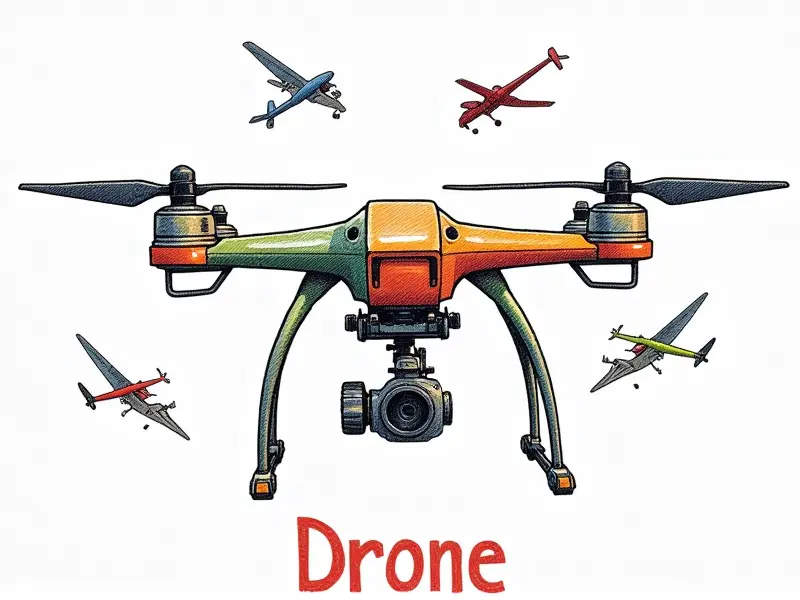Can drones detect faces?

Is Your Privacy at Risk from Flying Cameras?
The rapid advancement of drone technology has brought both excitement and concern to the public. As drones become more sophisticated, one pressing issue is their ability to detect faces in real-time. The integration of facial recognition software into drones raises significant privacy concerns for individuals who may be unaware that they are being monitored.
How Effective Are Drones in Facial Recognition?
Drones equipped with advanced cameras and AI algorithms can now perform facial recognition tasks with remarkable accuracy. These unmanned aerial vehicles (UAVs) use high-resolution imaging to capture detailed images of faces, even from a distance. The effectiveness of drone-based face detection depends on several factors such as lighting conditions, weather, and the quality of the facial recognition software.
The Future of Surveillance: Drone Face ID
As technology evolves, drones will likely play an increasingly prominent role in surveillance operations. With their ability to operate at high altitudes and cover large areas quickly, drones equipped with face detection capabilities can monitor crowds efficiently. This raises ethical questions about the balance between security and privacy.
Can Drones Spot Faces in Crowds?
A key challenge for drone-based facial recognition systems is identifying individual faces within densely populated environments. Modern drones are designed to handle this complexity by using sophisticated image processing techniques that can isolate faces even when multiple people overlap or move rapidly.
Detection Capabilities
- High-resolution cameras capture clear images of faces.
- Sophisticated algorithms analyze facial features accurately.
- Real-time processing enables quick identification in crowded areas.
Drone Tech Advances: Face Detection Capabilities
The latest advancements in drone technology have significantly enhanced their face detection capabilities. Innovations such as improved camera optics, AI-driven image analysis, and powerful onboard computing systems allow drones to perform facial recognition more effectively than ever before.
Key Features of Advanced Drones
- High-Definition Cameras: Capture detailed images under various lighting conditions.
- AI Algorithms: Efficiently process and analyze facial data in real-time.
- Onboard Computing: Handle complex image processing tasks without lag.
Drones Join the Face Recognition Race
The competitive landscape of drone technology is becoming more crowded as manufacturers race to develop superior face recognition capabilities. Companies are investing heavily in research and development to stay ahead, leading to continuous improvements in accuracy and efficiency.
Competitive Landscape
- Innovation: Rapid advancements drive the market forward.
- Investment: Significant capital is poured into R&D efforts.
- Accuracy: Striving for perfect facial recognition in all conditions.
FPV Racing Drones and Their New Role
First-person view (FPV) racing drones, originally designed for entertainment purposes, are now being repurposed to include face detection capabilities. This shift opens up new possibilities for surveillance applications while also raising concerns about the potential misuse of such technology.
New Applications
- Security: Enhancing crowd monitoring and security measures.
- Research: Studying human behavior in public spaces more effectively.
- Entertainment: Innovative ways to engage with crowds during events.
Privacy Alert: Drones Now See Your Face
The ability of drones to detect faces has sparked widespread debate about privacy rights. As these devices become more common, individuals may feel increasingly vulnerable to surveillance without their knowledge or consent. Legal frameworks are being developed to address these issues and protect personal privacy.
Privacy Concerns
- Informed Consent: Need for explicit permission before monitoring.
- Data Protection: Safeguarding personal information collected by drones.
- Legal Regulations: Establishing guidelines to prevent misuse of technology.
Facial Recognition via RC Quadcopters Today
The integration of facial recognition into remote-controlled (RC) quadcopter systems is already a reality. These small, agile drones can navigate through tight spaces and capture high-quality images suitable for face detection purposes. This development underscores the versatility and adaptability of drone technology.
Current Applications
- Security: Monitoring restricted areas with precision.
- Research: Conducting studies on human interactions in urban settings.
- Entertainment: Innovative uses in sports and events.
Are Drones Equipped to Detect Human Faces?
The answer is a resounding yes. Modern drones are indeed capable of detecting human faces with impressive accuracy and reliability. This capability has far-reaching implications for various industries, from security and law enforcement to marketing and research.
Technological Advancements
- Sophisticated Cameras: High-resolution imaging ensures clear face detection.
- Advanced Algorithms: AI-driven software enhances recognition accuracy.
- Onboard Computing: Powerful processors enable real-time data processing.
Drone Tech: Face Detection on the Rise
The trend towards incorporating face detection technology into drones is unmistakable. As this trend continues, we can expect to see more sophisticated and versatile applications of drone-based facial recognition systems across various sectors.
Future Trends
- Growing Demand: Increased interest in surveillance and security solutions.
- Technological Improvements: Continuous enhancements to improve performance.
- New Applications: Innovative uses in fields such as healthcare, marketing, and more.
Conclusion
The integration of face detection technology into drones represents a significant leap forward in surveillance capabilities. While these advancements offer numerous benefits for security and research, they also raise serious privacy concerns that need to be addressed through robust legal frameworks and ethical guidelines. As drone technology continues to evolve, it is crucial to strike a balance between leveraging its potential while safeguarding individual rights.

